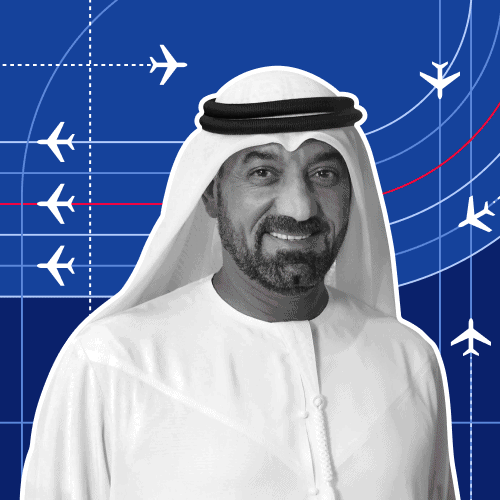
Waterfield Advisors on how they approach impact investing
Waterfield Advisors is India’s largest multi-family office. Their founder and CEO Soumya Rajan leaned on decades of experience in private banking to create a next-generation MFO to provide high-touch services and guidance to families and HNWIs. Here, they discuss their approach to impact investing.

Based in Mumbai, the MFO achieved significant growth since its founding in 2011, currently with 4.3 billion USD assets under management. Waterfield recently secured $6 million in a Series B funding round that will finance expanding its services to include unlisted investments. This requires hiring new talent and upgrading their technology. The firm also plans on expanding its presence internationally to Singapore, England, the US, and the Middle East.
About the Company

Waterfield Advisors
- Location India
- Type Multi-family office
- Founded 2011
- Services Financial planning, succession, governance, philanthropy
Organising Principles
Waterfield Advisors is founded under three core principles—Compassion, Social Responsibility, and Technological Innovation—that reach from their office to their clients and their investments. Their bespoke service offerings include financial planning, succession, family governance, and philanthropy for families with over $10 million and investment advising, estate planning, philanthropy, and analytics for HNWIs.
ESG at Waterfield Advisors
Waterfield’s commitment to ethical investing is clear. The firm is a signatory to the United Nations’ Principle for Responsible Investment (PRI), which outlines six principles encompassing investment decision making to reporting. Bringing an environmental, social, and governance (ESG) investment framework to the fore is at the core of their model and can be seen in their ESG whitepaper. They have deep experience leveraging ESG technological solutions to provide clear views of the available data for listed investments. For unlisted investments, they require all funds to provide full disclosures as part of their due diligence process.
Impact Investing
Not content with limiting their investments to ESG guidance and accountability, Waterfield is a leading impact investor. Impact investing is an investment strategy that intentionally deploys capital to create transformational social or environmental change while generating financial returns for investors. It combines motivations typically found in philanthropy with the outlook of ethical investing.
Shaping the World through Impact Investing
How did Waterfield Advisors first become interested in impact investing?
While the impact investing ecosystem in India has largely been driven by global institutional investors, the last decade has seen an increase in interest from Indian family offices (FO). As Indian FOs have begun to consider the impact of their investment decisions, there has been an almost inexorable push towards more impactful investments. As fiduciaries for some of the largest families in the country, our investment thesis is, in part, influenced by their ethos and expectations. Our clients have started asking more existential questions about their wealth and its purpose and this impact-focused mindset change has also influenced our own approach to the wealth advisory services we provide. For Waterfield, this transition has been a natural one – our mantra has always been ‘wealth with purpose’. We view impact investing as an extremely effective tool to help our clients mobilize much-needed capital to support entrepreneurs who are innovating around market-based solutions to sustainably address problems at scale.
How does Waterfield Advisors view impact investments in relation to its other investing and philanthropic activities?
To Waterfield, and our impact-focused families, impact investing is viewed as occupying the space between philanthropy and traditional investing with the opportunity to complement both ends of the spectrum in unique and innovative ways. However, the approaches to impact investing differ significantly, between families as well as within families. For some, there is a clear delineation between impact investing and conventional philanthropy, and they view the former to be a subset of their primary PE/VC allocation. For families coming in with a more philanthropic bent of mind, they see impact investing as an extension of their philanthropic approach whereby capital is leveraged to provide market-based solutions to larger socio-environmental issues. Based on our experience with families in the space, there appear to be two entry points into impact investing – a journey from philanthropy to social venture capitalism and a journey from commercial venture capitalism to social venture capitalism. In most cases, expectations of returns and their priority (i.e., impact first or returns first) are dependent on the point of entry. However, most of our families clearly view impact investing as an investment strategy and consequently expect their investments to give them risk-adjusted, market-rate returns.
What was your first step of engagement in the impact investment ecosystem?
As with any new endeavour, our first step was to learn as much about the space as we could. This involved multiple conversations with impact fund managers, investors, industry leaders as well as known critics. Impact investing in India is still at its nascency and the available data and knowledge are limited. As a multi-family office, it was important for us to look at this from a multi-LP perspective, and in order to do that, we needed to understand impact investing from various viewpoints. One positive outcome of this endeavour was that we developed a strong network within the ecosystem. As one of the few multi-family offices with a very clear and specific focus on impact investing, this network was vital to not only help us learn more about the space and source better opportunities but also to position Waterfield as a very serious stakeholder in India’s growing impact investing ecosystem.
How does your family office plan its impact investments?
Creating an impact investing strategy for a client requires significant groundwork even before the first deal is brought to the table. Prior to any allocation, our team converses with the family and puts down a clear allocation strategy. Even within impact investing, the opportunities are diverse. Based on a family’s risk appetite and philanthropic bend, we plan allocations to funds, direct deals (co-investments through funds) and blended finance products like pay-per-outcome models or development impact bonds (DIBs). As an extension of the family’s own family office, Waterfield puts great emphasis on ensuring that families enter the fray backed with considerable knowledge and expertise. Thus, the first step for any family is exposure. For novice investors, this involves significant one-on-one meetings to cover the nuances of impact investing. We bring in sector experts, senior fund managers and other veteran investors for master classes on impact investing and blended finance. The next step is sourcing opportunities. More often than not, there is a sector preference when it comes to impact investing. We leverage our existing network to source opportunities but also rely on industry bodies such as the Impact Investors Council (IIC) to keep abreast of the latest trends in the space.
How do you evaluate impact investments?
Waterfield evaluates every impact investment, regardless of the type of investment (direct deal, blended finance, etc.) and risk appetite, with the same rigour as we would any conventional, commercial investment. Our value add is a deep dive into the impact of an investment. In the case of an impact fund, our philanthropy and impact team conduct an impact evaluation at three levels – organization, fund and investee. At the organization level, we evaluate the impact measurement and management (IMM) team (strength and qualification) and overall experience, IMM across the investment life cycle (goal measurement systems and appraisals, IMM integration with the pre-investment evaluation and investment committee process, performance indicators, etc.) and IMM reporting (frequency, depth, commitments to international standards, etc.).
At the portfolio level, we evaluate each fund in isolation. Specific focus is given to cross-cutting impact i.e., funds catalysed for investees, no. of beneficiaries, % of women and special needs beneficiaries etc. Our focus is not only on output but also on outcomes – for example, we don’t only look at the number of women impacted through a particular investment, but also the level of impact and the general improvement in quality of life.
At the investee level, we drill down into each investment to better understand their intent to create impact, the suitability of the particular product or service and their ESG practices. Our alternates team evaluates every deal and company with an extremely strict financial lens. We also conduct multiple reference checks with other institutional and family office LPs (especially anchor investors) in addition to calls with the investees.
The end product is a detailed due diligence document that covers the investments in past funds, fund investment strategy and impact performance.
Can you detail an impact investment case study from its planning through to execution and evaluation?
Early last year, we had a long-time client of Waterfield come to us with a very interesting request. As a veteran philanthropist, she wanted to up the ante by leveraging her investment capital to create a sustainably invested pool that would generate returns that would be ploughed back into impact investing and philanthropy. As she was relatively new to the whole PE/VC space, the first order of business was to give her an overview of investing in alternatives. The head of our alternatives team conducted a session with her and explained the basics as well as the risk-return expectations. With a better grasp of the ABCs of PE/VC, her relationship manager along with the philanthropy and impact team, helped her decide the total allocation she wished to put aside for this endeavour. This involved taking a broader perspective and dividing the allocation into three separate investment branches – impact funds, direct investments into impact enterprises within sectors of interest and investments into hybrid social finance models. With an allocation in place, we worked with veteran impact fund managers to give her a more nuanced overview of impact investing in India and helped her narrow down on specific sectors. Based on her preference and risk appetite, the team evaluated some of the larger, more established funds through our finance and impact lens and recommended the best option for her. Similarly, the team also sourced and evaluated direct deals and hybrid social finance models. With initial allocations in place, our team continues to scan the ecosystem and proactively identify and evaluate deals for her. We also work with her to ensure that she has access to a constant stream of experts and content to allow for better learning opportunities.





